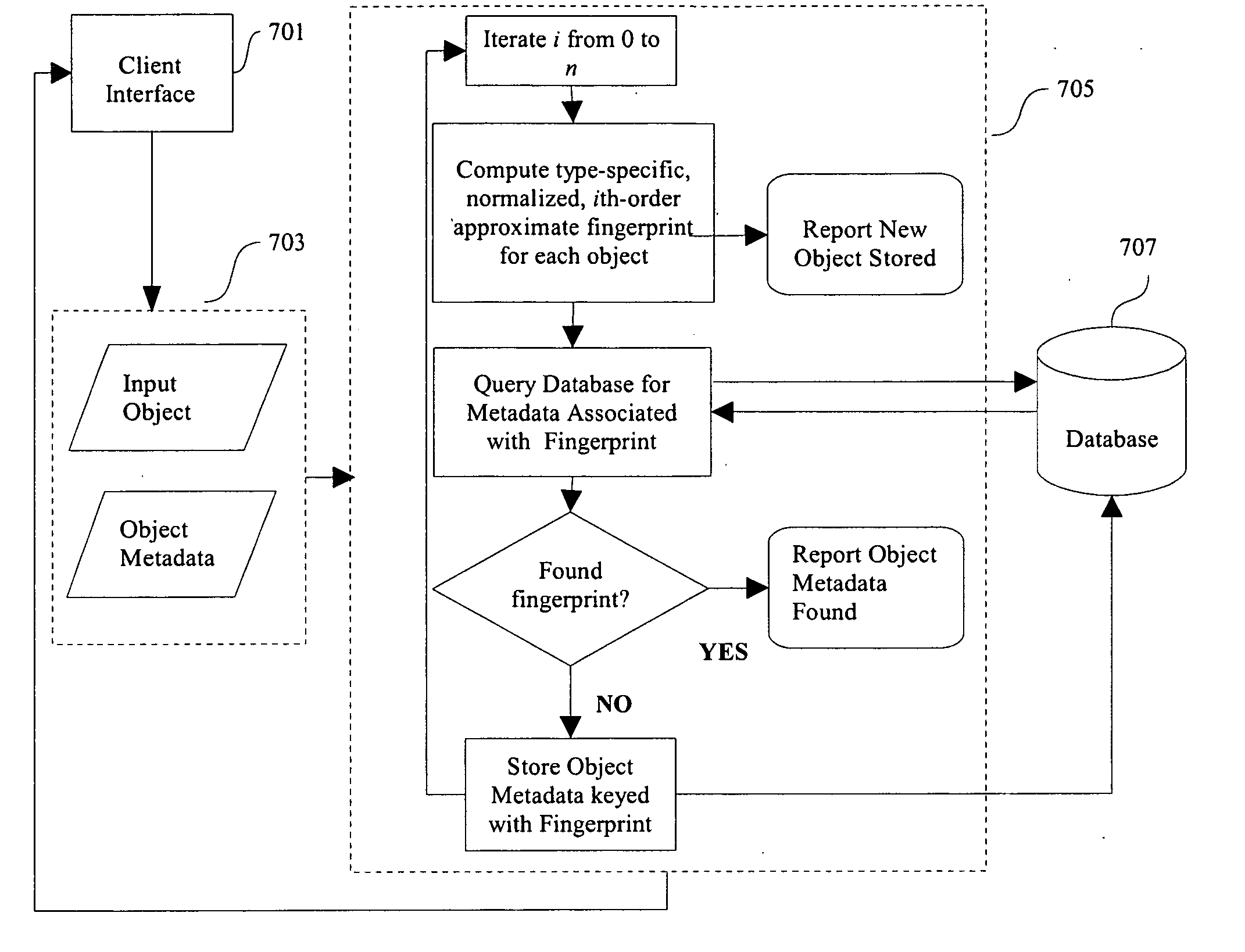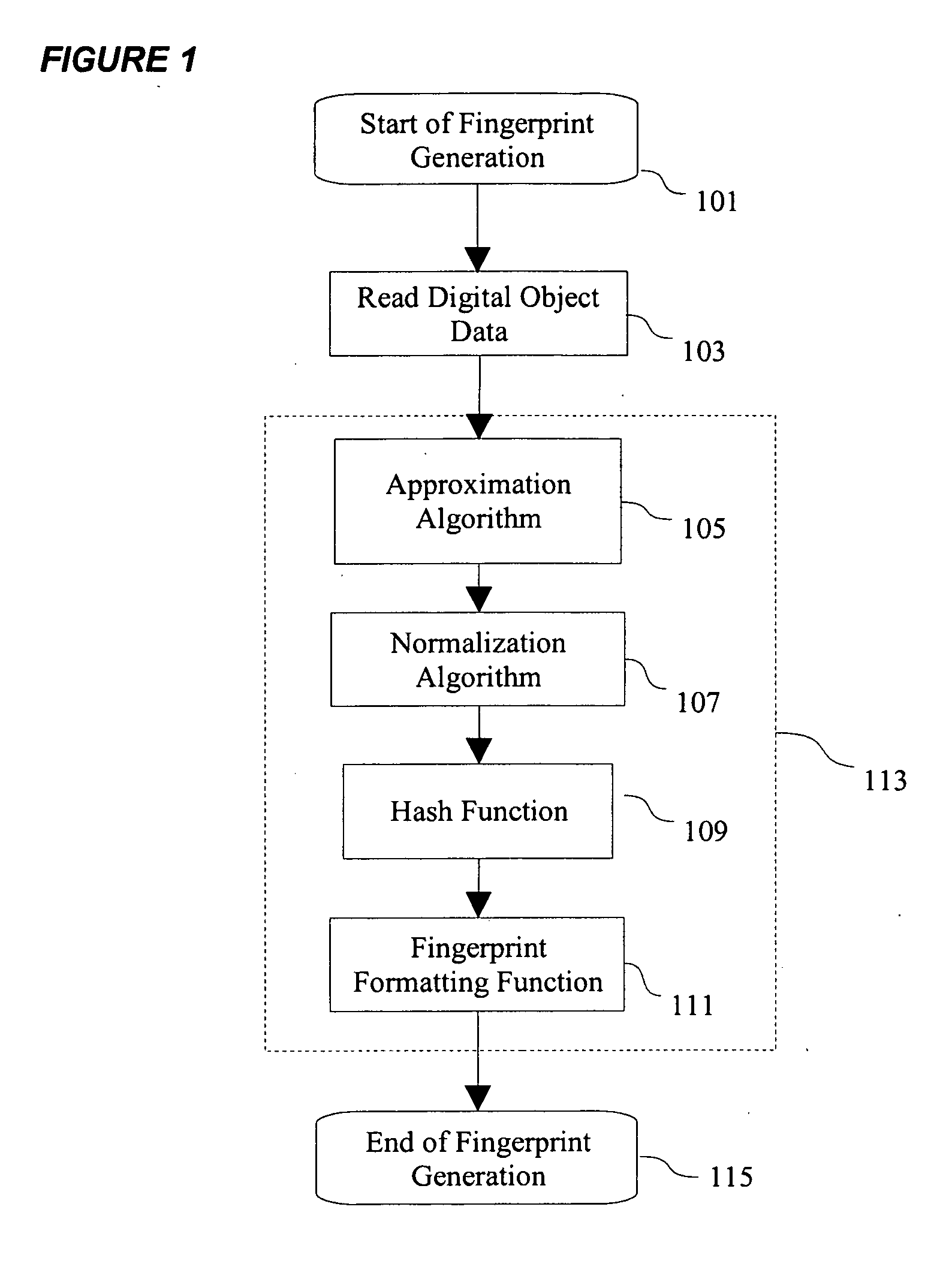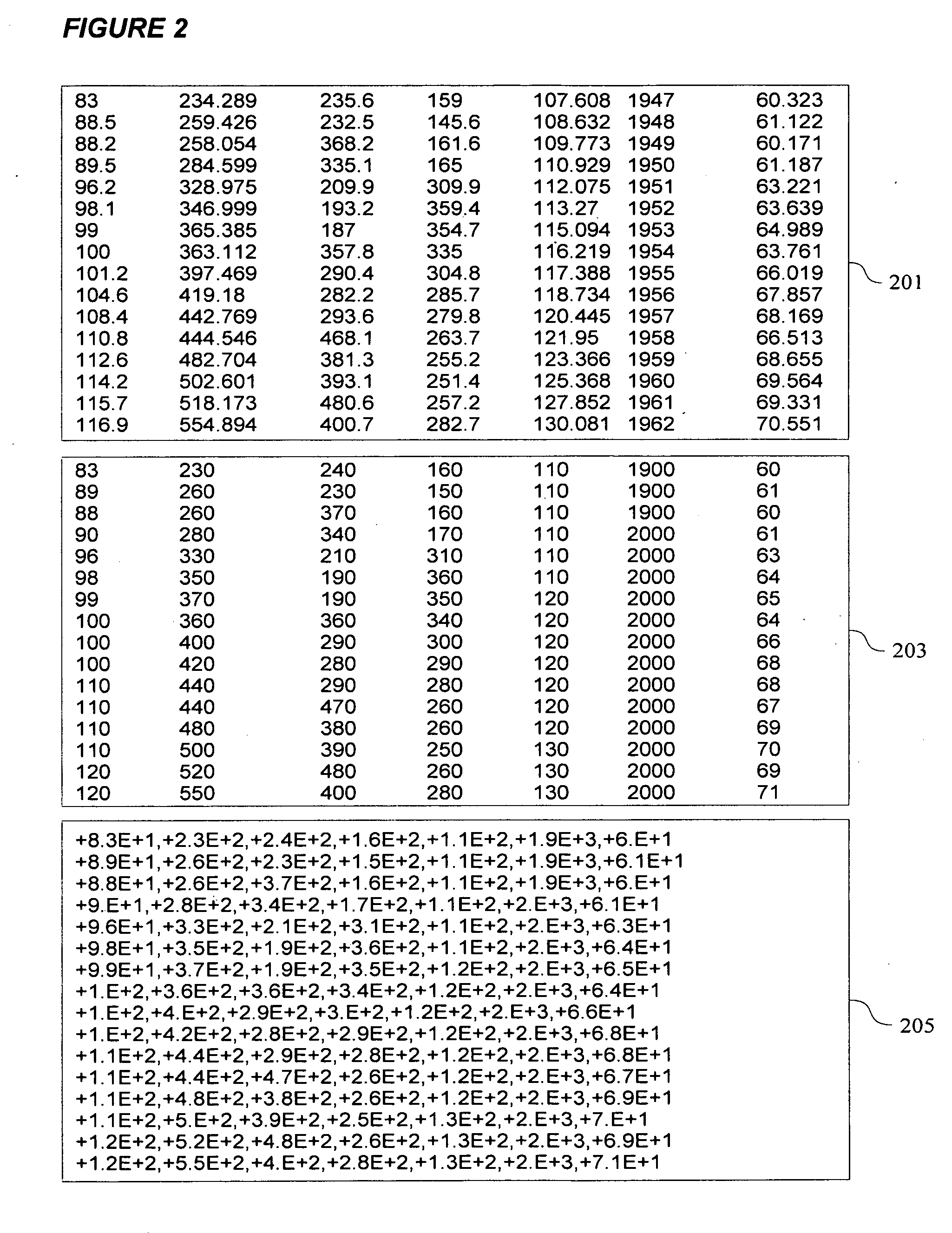Digital object verification method
a verification method and object technology, applied in the field of digital objects, can solve the problems of no standardized method for automatic verification, change in the precision, fidelity, accuracy or level of detail of the object, and the inability to use watermarking algorithms to establish the two
- Summary
- Abstract
- Description
- Claims
- Application Information
AI Technical Summary
Benefits of technology
Problems solved by technology
Method used
Image
Examples
first embodiment
[Description of First Embodiment]
[0045] The first embodiment of the present invention will be described with reference to the drawing. FIG. 1 is a flowchart showing the operation of the digital object verification method according to the present embodiment.
[0046] As shown in the figure, the fingerprint generation process is comprised of reading the digital object 103, a semantic approximation algorithm 105, which generates a deterministic approximation of the semantic content of the object; a sequential normalization algorithm 107, which converts the approximated content into a standard normal form byte-sequence; and a hash function 109, which generates a digital fingerprint using the normalized byte sequence. The fingerprint is then formatted in a self-documenting format 111. Steps 105, 107, 109, and 111 may be grouped together as shown in 113 to form a code library for use in other applications.
[0047] In one variation, a cryptographic hash function or message digest is used as t...
second embodiment
[Description of Second Embodiment]
[0056] The second embodiment of the present invention will be described with reference to the drawing. FIG. 5 is a flowchart showing the operation of the fingerprint verification system according to the present embodiment.
[0057]FIG. 5 is a flowchart showing the operation of the fingerprint verification method according to an embodiment. As shown in the figure, the fingerprint verification method is comprised of the following steps: reading a digital object 103, reading a previously stored fingerprint 501 generated from the original object; reading a digital object alleged to be the same as the original object 503; parsing the saved fingerprint 507, generating a new fingerprint from the digital object using the parameters from the saved fingerprint 509, checking that the two match 511, and reporting either failure 513 or success 515.
third embodiment
[Third Embodiment]
[0058] The third embodiment of the present invention will be described-with reference to the drawing. FIG. 6 is a flowchart showing the operation of the fingerprint comparison method according to the present embodiment.
[0059]FIG. 6 is a flowchart showing the operation of the fingerprint comparison method according to an embodiment. As shown in the figure, the fingerprint generation method is comprised of a target data acquisition step where the content of two digital objects is acquired 603, 6-5; a type-checking step 607 with a determination as to whether types match 609; a report of failure if no match 611; and an iterative fingerprint generation 613, where the fingerprint generation method shown in FIG. 1 above is used with decreasingly accurate approximations 617 to determine whether fingerprints match at any level of approximation 619; leading to a report of failure 615 or success 621.
PUM
 Login to View More
Login to View More Abstract
Description
Claims
Application Information
 Login to View More
Login to View More - R&D
- Intellectual Property
- Life Sciences
- Materials
- Tech Scout
- Unparalleled Data Quality
- Higher Quality Content
- 60% Fewer Hallucinations
Browse by: Latest US Patents, China's latest patents, Technical Efficacy Thesaurus, Application Domain, Technology Topic, Popular Technical Reports.
© 2025 PatSnap. All rights reserved.Legal|Privacy policy|Modern Slavery Act Transparency Statement|Sitemap|About US| Contact US: help@patsnap.com



